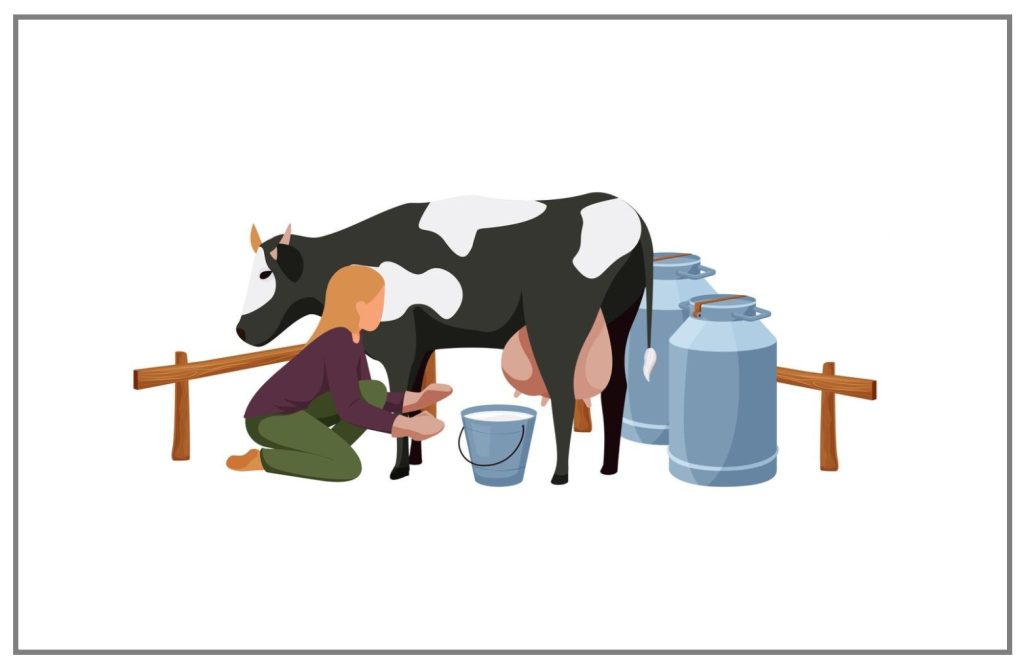Wellhealthorganic.Com : Buffalo Milk Good For Health

FreePik.com
Wellhealthorganic.Com : Buffalo Milk Good For Health – Nutrition Facts, Uses, Benefits & Side Effects
Buffalo milk good for health? Discover all about its nutritional value, health benefits, uses, preparation methods, skin benefits, and potential side effects. This Wellhealthorganic.Com : Buffalo Milk Good For Health complete guide is based on insights from WellHealthOrganic.com: Buffalo Milk Good For Health.
Is Buffalo Milk Good for Health?
Buffalo milk is a nutrient-dense beverage that can be highly beneficial for many individuals. According to Wellhealthorganic.com: Buffalo Milk Good For Health, it is rich in calcium, protein, fat, and essential vitamins, making it a valuable addition to your daily diet. However, it’s essential to assess personal dietary needs and consult a healthcare expert before incorporating buffalo milk regularly.
Which Milk Is Better ? – Cow Milk or Buffalo Milk?
Cow Milk Properties
- Lower in fat (3–4%).
- Easily digestible and widely available.
- Rich in calcium, protein, and vitamin D.
- Preferred for children and elderly due to lighter composition.
Buffalo Milk Properties
- Higher in fat (6–8%), protein, and minerals like phosphorus and calcium.
- Creamier texture and richer taste.
- Ideal for producing ghee, paneer, and cheese.
Conclusion: Your choice depends on individual health goals and taste preference. Buffalo milk is ideal for muscle growth and bone health, while cow milk suits low-fat diets.
WellHealthOrganic Buffalo Milk Benefits Over Cow Milk
Buffalo milk has some clear advantages:
- Higher Nutritional Value – More protein, calcium, phosphorus, and fat.
- Creamy Texture – Makes it excellent for dairy products.
- Muscle Building Support – Due to higher protein content.
- Bone Health – Enhanced calcium & phosphorus levels.
- Better Shelf Life – Thanks to higher peroxidase activity.
- Low in Cholesterol – Heart-friendlier despite higher fat.
- Rich in Vitamins – Including A, B2 (riboflavin), and C.
- Stronger Immunity – Contains more immunoglobulins.
- Taste Advantage – Preferred for its rich and creamy flavor.
- Lower Lactose – Sometimes tolerated better by sensitive individuals.
Nutrition Facts Of Buffalo Milk
According to Wellhealthorganic.Com : Buffalo Milk Good For Health, the nutritional profile includes:
- High Protein: Aids in muscle repair and immunity.
- Healthy Fats: Good for heart and energy.
- Vitamins A & D: For vision, skin, and calcium absorption.
- Iron & Calcium: Supports bones and oxygen transport.

How To Prepare Buffalo Milk for Babies
Buffalo milk for babies should be introduced carefully:
- Boil properly to remove bacteria.
- Cool before feeding.
- Dilute with water (1:1) for easier digestion.
- Remove cream layer if baby is sensitive to fats.
Always consult a pediatrician before introducing buffalo milk to infants.
Uses of Buffalo Milk for Health
- Direct consumption for daily nutrients.
- Smoothies & shakes for energy-packed drinks.
- Cooking & baking – Adds creaminess and flavor.
- Fermented dairy – Makes gut-friendly yogurt and kefir.
4 Best Health Benefits of Buffalo Milk
- Bone Health – Rich in calcium and vitamin D.
- Muscle Growth – Due to high protein content.
- Heart-Friendly – Low cholesterol makes it safer for cardiac health.
- Digestive Ease – Sometimes easier for lactose-sensitive individuals.
Buffalo Milk for Weight Loss – Insights from WellHealthOrganic
While buffalo milk is high in fat, it can still support weight loss when consumed in moderation.
Pros:
- High protein keeps you full longer.
- CLA content may reduce body fat.
- Nutrient-dense for overall health.
Cons:
- Higher calorie and fat content.
- Not ideal for lactose-intolerant individuals.
- More expensive and less available.
Recommendation:
- Consume in moderation.
- Combine with balanced diet and exercise.
Buffalo Milk Benefits for Skin Whitening
- Lactic Acid – Gently exfoliates and brightens skin.
- Vitamin A – Reduces pigmentation, promotes new skin cells.
- Natural Moisturizer – Fat content hydrates dry skin.
How To Use It?
- Cleanser – Apply with a cotton ball and rinse.
- Milk Bath – Mix with bathwater for a skin-softening soak.
- Face Mask – Mix with honey/turmeric for a glow-boosting mask.
Side Effects of Buffalo Milk
While beneficial, excessive buffalo milk may cause:
- Bloating
- Gas
- Diarrhea
Especially for those with lactose intolerance or dairy allergies. Always introduce slowly and monitor your body’s response.
WellHealthOrganic Buffalo Milk Tag – Why It Matters?
The Wellhealthorganic.Com : Buffalo Milk Good For Health assures:
- 100% Organic
- Free from harmful chemicals
- High nutritional value
- Strict quality checks from farm to shelf
Look for this tag when purchasing dairy for health-conscious, eco-friendly choices.
In India, Amul buffalo milk is widely available in stores and online.
Cow Milk vs. Buffalo Milk – Summary Table
| Feature | Cow Milk | Buffalo Milk |
| Fat Content | 3-4% | 6-8% |
| Protein | Lower | Higher |
| Cholesterol | Higher | Lower |
| Shelf Life | Shorter | Longer |
| Taste | Mild | Rich & Creamy |
| Calcium & Phosphorus | Moderate | Higher |
| Lactose | More | Slightly Less |
How To Prepare Buffalo Milk For Baby ?
Preparing buffalo milk for your baby requires careful consideration to ensure they receive the essential nutrients needed for healthy growth and development. Begin by choosing high-quality, organic buffalo milk to guarantee purity and freshness.
- Boil the buffalo milk thoroughly to kill any harmful bacteria that may be present.
- Let it cool down to a suitable temperature before feeding it to your little one. You can also opt to skim off the cream layer if your baby is sensitive or allergic to dairy fats.
- Consider mixing buffalo milk with water in a 1:1 ratio for younger babies who may find pure milk too heavy.
- This diluted version can be easier for their delicate stomachs to digest while still providing vital nutrients.
Always consult with your pediatrician before introducing buffalo milk into your baby’s diet, especially if there are existing health concerns or allergies. Remember, every child is different, so what works well for one may not necessarily work for another when it comes to nutrition and dietary choices.
WellHealthOrganic Buffalo Milk Tag
Have you heard about the Wellhealthorganic.Com : Buffalo Milk Good For Health? It’s a game-changer in the dairy industry. This tag guarantees top-quality buffalo milk that is organic and free from harmful chemicals. When you see this tag, you know you’re getting a product that prioritizes your health.
WellHealthOrganic.com takes pride in providing consumers with nutrient-rich buffalo milk that promotes overall well-being. By choosing products with this tag, you are not only nourishing your body but also supporting sustainable and ethical farming practices.
The buffalo milk bearing the WellHealthOrganic undergoes rigorous quality checks to ensure purity and freshness. From farm to table, every step is carefully monitored to deliver a premium product that surpasses industry standards. If you live in India you can easily find amul buffalo milk on any grocery store.
Side Effects of Buffalo Milk
While buffalo milk offers numerous health benefits and is a nutritious alternative to cow’s milk, it is essential to be aware of potential side effects. Excessive consumption of buffalo milk may lead to digestive issues such as bloating, gas, or diarrhea in some individuals. Additionally, individuals with lactose intolerance or dairy allergies should exercise caution when consuming buffalo milk.
- Bloating
- Diarrhoea
- Gas
As with any food or drink, moderation is key to enjoying the benefits without experiencing adverse effects. By understanding the nutrition facts, health benefits, uses, and potential side effects of buffalo milk, you can make informed decisions about incorporating this nutrient-rich beverage into your diet. Remember to consult with a healthcare professional if you have any concerns about adding buffalo milk to your daily routine.
Incorporating Wellhealthorganic.Com : Buffalo Milk Good For Health into your lifestyle can provide a delicious and nourishing option for meeting your nutritional needs. Experiment with different ways of enjoying buffalo milk – whether in smoothies, coffee beverages, or simply on its own – and savor the goodness it has to offer!
Final Thoughts
Incorporating Wellhealthorganic.Com : Buffalo Milk Good For Health into your diet can help you enjoy numerous health benefits from this nutrient-rich superdrink. Whether you’re using it for its muscle-building power, bone-strengthening minerals, or skin-enhancing qualities, buffalo milk stands out as a natural and versatile choice.
Remember: Moderation and professional guidance are key. Explore more at Wellhealthorganic.Com : Buffalo Milk Good For Health and embrace the natural goodness of buffalo milk today!
FAQs – WellHealthOrganic Buffalo Milk Tag
Q1: What is the main difference between buffalo milk and cow milk?
Buffalo milk has higher fat and nutrient content, while cow milk is lighter with fewer calories.
Q2: Is buffalo milk suitable for lactose-intolerant individuals?
It contains lactose but may be better tolerated by some. Always test in small amounts.
Q3: Is buffalo milk healthier than cow milk?
Nutritionally richer in many aspects but also higher in fat and calories.
Q4: Can buffalo milk be used in cooking like cow milk?
Yes! Especially in Indian recipes like paneer, ghee, and kheer.
Q5: Which milk supports bone health better?
Buffalo milk, due to higher calcium and phosphorus.
Q6: What about cholesterol?
Buffalo milk surprisingly has lower cholesterol levels.






